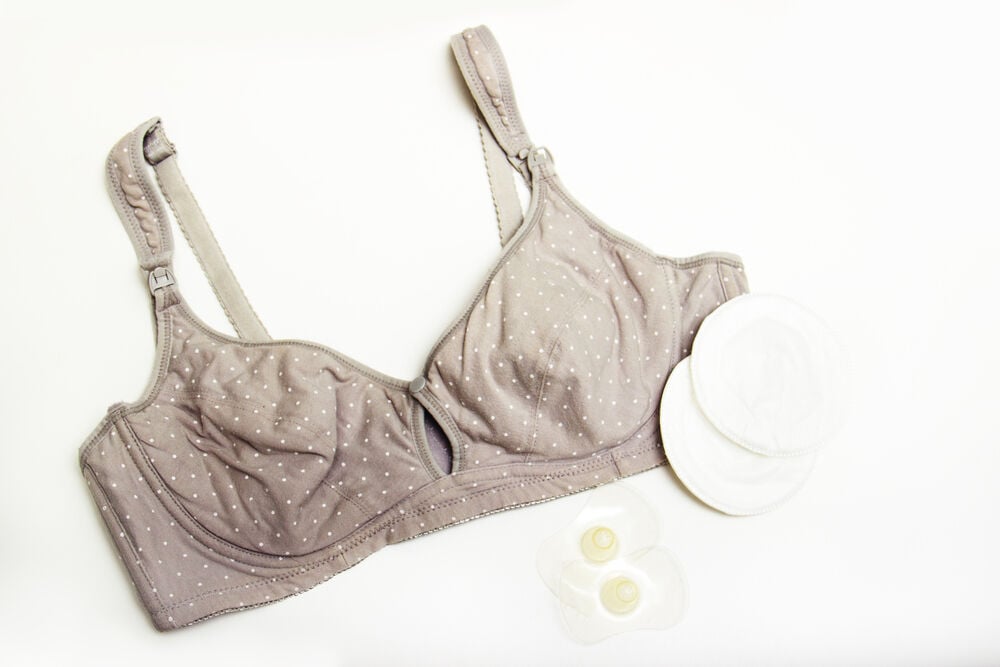-
Tracking cycle
-
Getting pregnant
-
Pregnancy
-
Help Center
-
Flo for Partners
-
Anonymous Mode
-
Flo app reviews
-
Flo Premium New
-
Secret Chats New
-
Symptom Checker New
-
Your cycle
-
Health 360°
-
Getting pregnant
-
Pregnancy
-
Being a mom
-
LGBTQ+
-
Quizzes
-
Ovulation calculator
-
hCG calculator
-
Pregnancy test calculator
-
Menstrual cycle calculator
-
Period calculator
-
Implantation calculator
-
Pregnancy weeks to months calculator
-
Pregnancy due date calculator
-
IVF and FET due date calculator
-
Due date calculator by ultrasound
-
Medical Affairs
-
Science & Research
-
Pass It On Project New
-
Privacy Portal
-
Press Center
-
Flo Accuracy
-
Careers
-
Contact Us
How to Prepare for Breastfeeding Before Your Baby Arrives


Every piece of content at Flo Health adheres to the highest editorial standards for language, style, and medical accuracy. To learn what we do to deliver the best health and lifestyle insights to you, check out our content review principles.
5 steps to prepare for breastfeeding
These five steps can help you prepare for breastfeeding.
1. Make a decision
The first choice is whether or not you will try to breastfeed your new baby. Breastfeeding provides all of the nutrients your baby needs for their first six months of life. In addition, breastfeeding provides natural temporary immunity to various infectious diseases. This helps protect them until it's time for their first round of immunizations.
2. Get informed
Start with your OB/GYN. They can provide information about the benefits of breastfeeding your new baby. They can usually schedule an appointment with a lactation consultant or nurse to tell you about the process and answer any questions you and your partner may have. Once you have the baby, don't hesitate to ask for help, especially during the first few days of breastfeeding.
Many hospitals and birthing centers offer classes for expecting parents. Ask your doctor if your hospital provides any classes for breastfeeding moms. Finally, talk to other parents about their positive experiences with breastfeeding.
3. Don't do it alone
As you recover from delivery, you will be tired. Most breastfeeding moms think that they are the only one who can feed the baby. This isn't true. You will need just as much rest as your baby at first, and depending on the way you delivered (vaginal or c-section), you may be sore as well.
During the first few days, your breasts will produce only colostrum. Colostrum is thick, sticky, and yellow. It serves many different purposes and is extremely important for your newborn. However, some babies are not completely satisfied with this small amount before your milk comes in. You may need to supplement with formula and let someone else feed the baby.
There may be other times when you need a break or aren't available when your baby is hungry. Breast milk that has been properly stored can be put in a bottle and fed to the baby by your partner or other caregivers when necessary.
4. Practice mental preparation
After you have learned about preparing for breastfeeding, the different techniques, and positions, it is time to sit down and run through the process in your head. Gather all of the things that you need, and practice.
5. Make a plan
A plan should include all of the things you will physically need as well as the support you'll need from others. Make sure you have everything that you think you'll need before the baby arrives. Make sure that rooms are set for you and your new baby. If you'll spend most of your day in one or two rooms, make sure that supplies are in both of these rooms and easily accessible.
Make sure that you have a support system in place if you need help. Things can change, and babies have a way of changing them without notice. You may have to deliver sooner than planned, or differently (e.g. an unplanned c-section). This is when you will need more help than you expected.
How to prepare your nipples for breastfeeding
Most obstetricians and lactation consultants say that there's nothing you need to do or know to prepare your nipples for breastfeeding. In fact, most of the care of your nipples will start once your baby has started feeding. You will need to keep your nipples clean and dry and wear a supportive bra. You can use some of the products listed below to make the experience more comfortable for you and your baby.
6 handy things to prepare for breastfeeding
These six handy things can help make breastfeeding more comfortable.
1. Nursing pillow

Nursing pillows are a little different from regular household or throw pillows. First of all, this pillow is for you and the baby exclusively. It is fresh, clean, and has a cover that can be washed as needed. Secondly, they are shaped to fit around or on you and add support for the baby while they are nursing. They are also flexible enough to accommodate different positions for feeding the baby.
2. Nursing bra
When you decide to breastfeed, you will need several nursing bras that offer easy access to your breast. They should also provide support for your breasts as they increase in size. It's difficult to predict how large your breasts will become when your milk comes in. As a result, it's a good idea to buy several in different cup sizes. Once your baby is breastfeeding regularly, your breast size should stay fairly consistent.
3. Breast pump
Breast pumps can be beneficial when you are first breastfeeding. Your newborn baby and your milk production may not be in sync yet, and you might make more breast milk than your baby can eat in a single feeding. This is a great time to pump and store. Breast pumps are also helpful when someone else will be watching the baby or if you return to work before you've stopped breastfeeding.
4. Nursing tops
Nursing tops offer more coverage when breastfeeding than lifting your shirt or unbuttoning your top. They usually have a slit or opening over each breast and are made so this area is covered by extra material, in the form of a pleat or gather. They provide more coverage and don't expose much of your breast when your baby is nursing. Small receiving blankets can also be used as a drape when breastfeeding in public.
5. Breast pads
Take a quiz
Find out what you can do with our Health Assistant

Breast pads can be helpful if you tend to leak breast milk between feedings or have sore nipples that need to have cream or ointment applied between nursing. There are disposable and washable versions, and they can be placed inside your nursing bra. Breast pads can offer comfort for sore nipples. They are soft and protect your clothing from milk or ointments.
6. Nipple creams
Choose a water-based nipple cream for sore nipples that is safe to use while breastfeeding. Most labels will include the ingredients and indicate if they are safe to use while nursing. Most manufacturers will also recommend that you remove any cream with warm water before nursing.
Some women experience sore nipples during the initial stages of breastfeeding. This can be caused by a baby who is not latching on correctly or from improper nipple care. Be sure to keep your nipples clean and dry before and after nursing. If breast milk is left on the nipples or if the nipple is wet inside a bra, it can cause irritation and chafing.


Hey, I'm Anique
I started using Flo app to track my period and ovulation because we wanted to have a baby.


The Flo app helped me learn about my body and spot ovulation signs during our conception journey.


I vividly
remember the day
that we switched
Flo into
Pregnancy Mode — it was
such a special
moment.
Real stories, real results
Learn how the Flo app became an amazing cheerleader for us on our conception journey.




